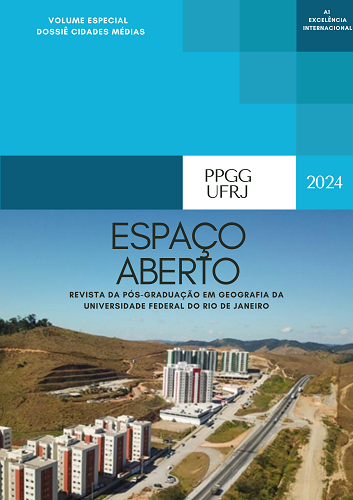Urban Thresholds: An Analytical-Comparative Perspective on Urban-Regional Dynamics in Brazil’s
DOI:
https://doi.org/10.36403/espacoaberto.2024.63307Keywords:
Urban Network, Urban-Regional Dynamics, Cities of Territorial Responsibility, Medium-Sized Cities, Intermediary CitiesAbstract
Based on the concept of socio-spatial formation and the notion of urban thresholds, this study aims to investigate how local idiosyncrasies impact urban-regional dynamics, even considering urban centers with similar demographic sizes and equivalent hierarchical levels within the Brazilian urban structure. The focus is on four cities: Patos-PB, Itabaiana-SE, Manacapuru-AM, and Ituiutaba-MG, each with an approximate population of 100,000 inhabitants. In addition to demographic size, variables related to intermunicipal movements in 2010 and other data available from the REGIC 2018 database are analyzed. The hypothesis that differences interpreted as circumstantial would be found was confirmed through the identification of specificities in interactions arising from the provision of certain services, which are specialized and unique to particular socio-spatial formations and their respective regional surroundings. The conclusions have important implications for the planning and implementation of territorial public policies.
Downloads
Downloads
Published
How to Cite
Issue
Section
License
Copyright (c) 2024 Vitor Koiti Miyazaki, Wagner Barbosa Batella, Cleverson Alexsander Reolon

This work is licensed under a Creative Commons Attribution-NonCommercial-ShareAlike 4.0 International License.
Funding data
-
Fundação de Apoio à Pesquisa do Estado da Paraíba
-
Conselho Nacional de Desenvolvimento Científico e Tecnológico
Grant numbers 315474/2021-1 -
Fundação de Amparo à Pesquisa do Estado de Minas Gerais
Grant numbers APQ-03169-18



